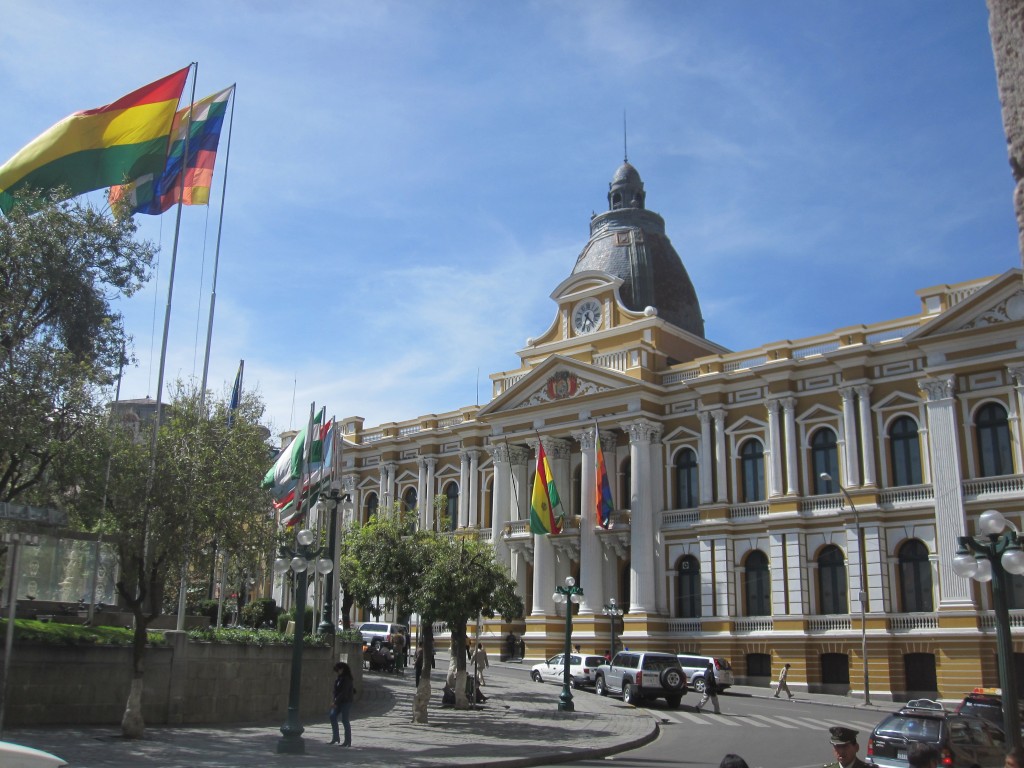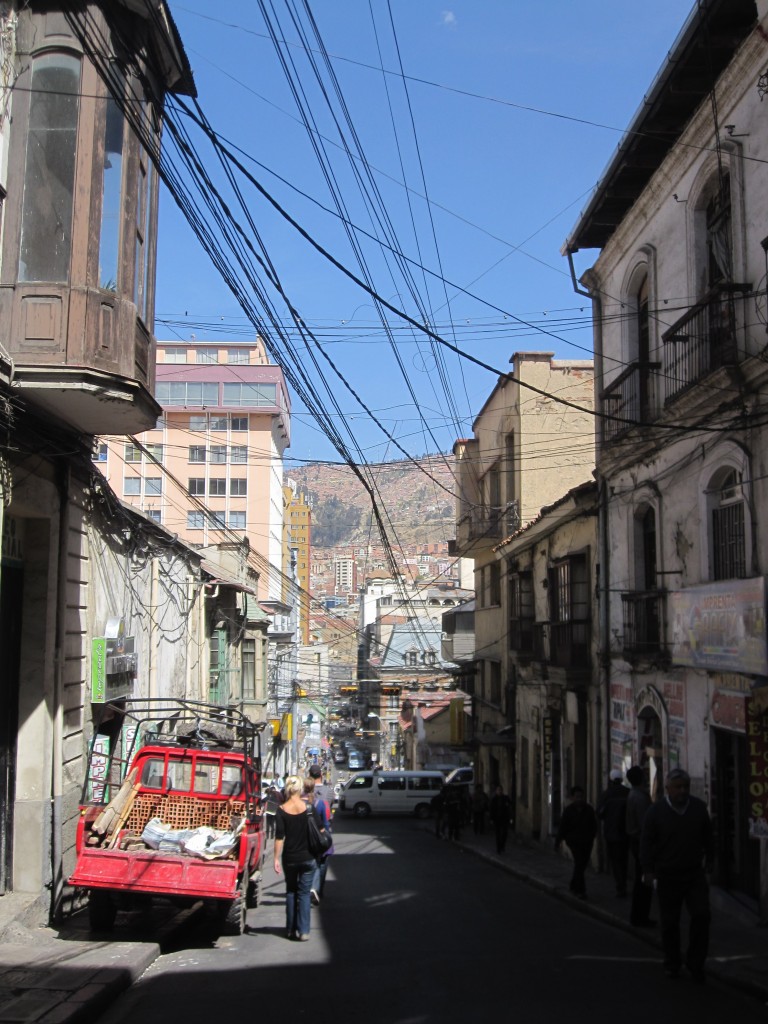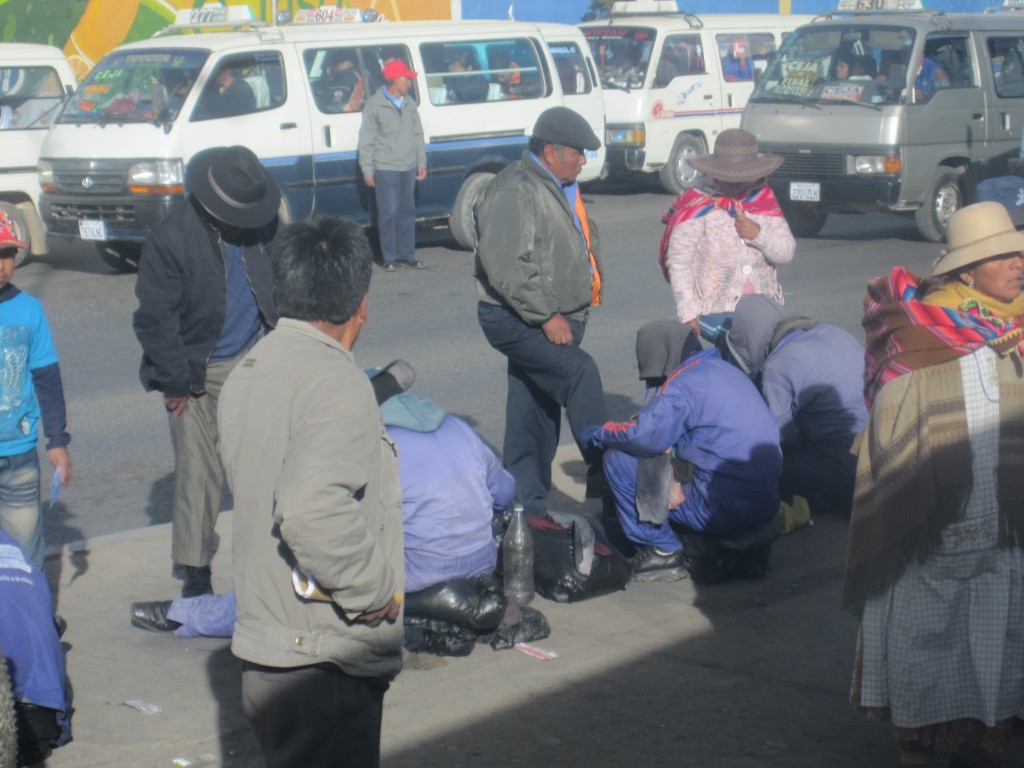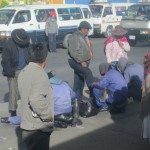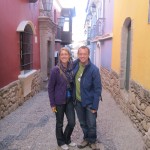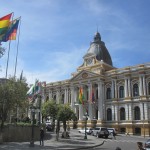We’re leaving La Paz, a city with jaw-dropping views and lung-straining altitude. I’ve got a big smile on my face as we’ve just had our final view of Huanya Potosí, one of the stark white peaks that overlooks the city, and where we were at the summit only 26 hours ago.
The guidebook had warned us to be in for a memorable sight as we arrived in La Paz, and it certainly didn´t disappoint. The city clings to the edges of a wide canyon, and as you come in from El Alto, the sprawling metropolis on the flat above, you´re treated to an incredible vista across the valley. I think everyone in the bus actually gasped when it first came into view!
We´d been warned to expect a busy, congested nightmare of a place, but ended up pleasantly surprised – yes, there was a lot of traffic, but down every one of those roads was a glimpse of the terracotta city heading up the hillside behind, or the incredible snow-capped peaks of Illimani which towers over the sprawl.
We spent a couple of days wandering around, soaking in the altitude (which wasn´t a big deal for us since we´ve been around this height for a few weeks now), eating tasty pizza and admiring the unique mix of cosmopolitan suits and government buildings set against the colourful traditional dress that many still wear. One distinctive sight is that of the shoeshine boys who occupy every corner and kindly offer to polish even the most travel-worn fabric sandals (not today thanks). Many are students earning some spare cash to support their education, but interestingly all cover their faces with balaclavas because of the shame of being associated with such a lowly side-job.
We also took the chance to drop into the Coca Museum, which provides an informative and balanced viewpoint on the Coca industry. Bolivia is the world´s largest Coca grower, with the vast majority of the crop destined for cocaine in America and Europe, and a battle that´s been raging for decades about how to best deal with the problem – fuelled in large part by the US DEA´s policy of destruction at source that has largely failed to realise an economic solution for the impoverished farmers trying to make a living.
The museum made a strong case for the benefits of chewing coca – common in South America for generations as a antidote to altitude. This is a very different effect from the concentrated cocaine highs people seek in the west, and is legal in many countries here – in fact we had Coca tea at breakfast this morning! There´s good scientific evidence to show its benefits for improving worker stamina (which the Catholic church recognised some time ago, rescinding their ban of the plant when they realised their slaves were much more effective when chewing the stuff!); it was really only when the western world turned it into cocaine and started exporting the stuff that the trouble started. The point is well made that in addition to the raw plant, the process of refining Coca into Cocaine is largely dependent on large quantities of imported chemicals – and you can guess which western nations they come from, in contravention of Bolivian import laws!
The exhibition also touched on the fascinating tale of Coca Cola and its chequered history – essentially originally including cocaine as its stimulant, and happily bragging about it on the packaging! Amid ongoing discussion about drug policy in the UK and across the world, it´s easy to see the problem as being cleanly divided into rich drug baron suppliers and western consumers, and a solution being destruction of the crop at source. It was certainly interesting to see things from the other side – the problem from Bolivia´s perspective is the huge demand from the west which has corrupted a practice that has existed for centuries and – as is also the case in Afghanistan also – can´t simply be solved by burning fields of crops.
Simon
- Illimani over the sprawling La Paz valley
- Our old friend Huayna Potosi over La Paz
- Shoeshine boys – note the covered faces to hide their identities
- Birthday girls celebrating with some English Cider!
- Laura and SImon with some colour
- Clinging to the hillside
- A typist service in the street – on actual typewriters!
- These buses are everywhere
- Not everyone is a fan of Evo
- Street with a view
- Guards at the Governor´s house
- Government building
- Education campaign to make motorists and pedestrians use zebra crossings properly – with a zebra!
- Kids demanding their right to healthcare at a UNICEF demo in the city centre

